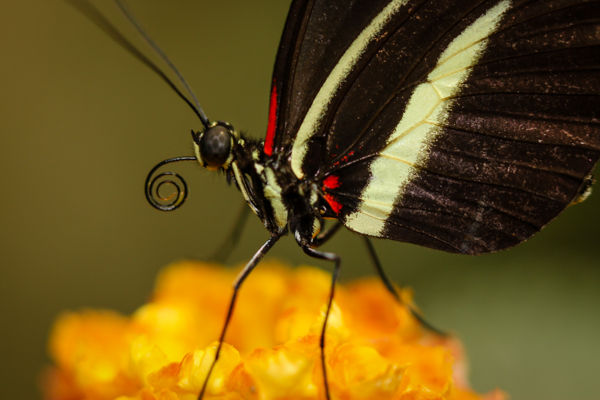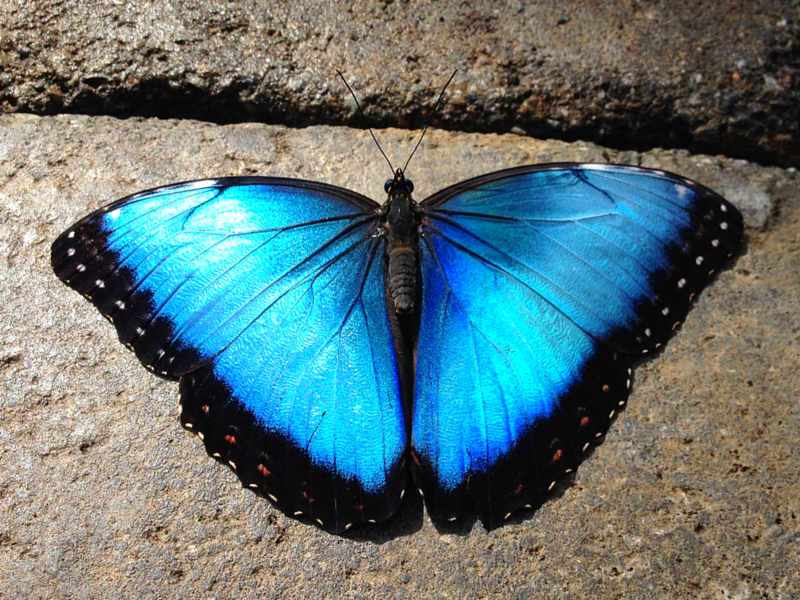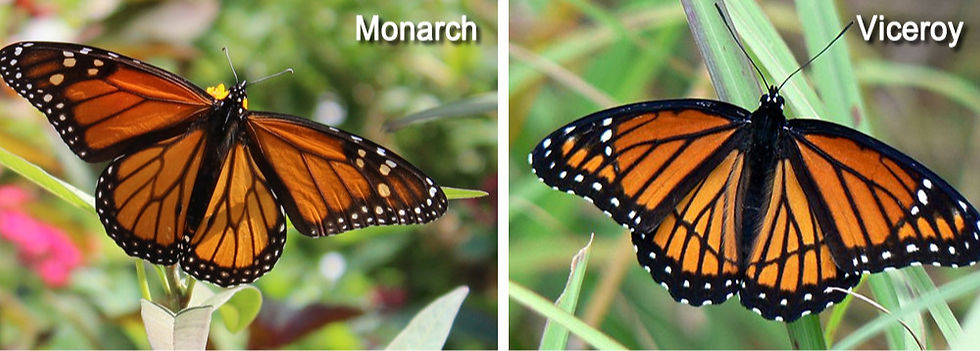Treasure Coast Trivia: Butterfly Life
- Treasure Coast Almanac
- Aug 2
- 4 min read
Butterflies are colorful creatures, important pollinators, clever survivors, and some are long-distance travelers. From their delicate wings to their surprising life cycles, butterflies in Florida and beyond are full of fascinating secrets. Let's unveil some of them here in our latest Treasure Coast Trivia quiz about the Incredible butterfly!
What is Florida’s official state butterfly?
A) Monarch
B) Zebra longwing
C) Queen
D) Eastern tiger swallowtail

Answer is B: The Zebra longwing was designated Florida’s state butterfly in 1996. Its month’s long lifecycle, as compared to most butterflies that live only a few weeks, is closely linked to the passion vine, a plant native to and abundant in Florida. Its caterpillars feed on passion vine and support this species as a significant pollinator. This connection underscores the butterfly’s crucial role in Florida’s ecosystems.
Monarchs in Florida are migratory.
A) True
B) False

The answer is B. Not always — some monarchs in Florida are part of a non-migratory population that breeds year-round, particularly in southern Florida. Monarch migration is complex, and Florida plays a unique role in it. Most monarchs in eastern North America migrate south in the fall to overwinter in the mountains of central Mexico. However, some monarchs that breed in the southeastern U.S., including Florida, may take a shorter migration to coastal areas or even stay in Florida year-round if conditions are favorable. This is especially true in southern Florida, where the mild climate and presence of non-native tropical milkweed (Asclepias curassavica) allow some monarchs to skip migration entirely and maintain resident populations.
Which invasive plant in Florida can negatively impact native butterfly species if overplanted?
A) Brazilian pepper
B) Tropical milkweed
C) Kudzu
D) Bougainvillea

The answer is B. Tropical milkweed is not native to Florida. It is attractive but can disrupt monarch migration by remaining green year-round in warmer climates, potentially leading to monarchs breeding in the fall and winter rather than migrating, which can be detrimental to their health and populations.
What is the purpose of a butterfly’s proboscis?
A) Seeing
B) Breathing
C) Flying
D) Drinking nectar

The answer is D. A proboscis is basically a butterfly’s multi-purpose tongue and is used to suck up liquid nectar from flowers. It acts as both tongue and straw, formed from two “galea” joined together which creates a central food canal. When a butterfly is not feeding, its proboscis is coiled up. At feeding time, the butterfly extends its proboscis into a straw-like shape which can be extended to reach nectar deep into flowers and other food sources.
Butterflies are cold-blooded
A) True
B) False

The answer is A. Butterflies, like most insects, are cold-blooded and need sunlight to warm up their flight muscles, so you’ll often see them basking in the morning on leaves or rocks On cool days, their activity slows down because their muscles can’t generate enough heat for flight.
The largest butterfly in the world is:
A) Queen Alexandra's birdwing
B) Rippon’s Birdwing
C) Giant Swallowtail
D) Goliath Birdwing

The answer is A. The Queen Alexandra’s birdwing (Ornithoptera alexandrae), a breathtaking species found only in the rainforests of Papua New Guinea, is the largest butterfly in the world. Females boast wingspans reaching up to 12 inches (30 centimeters), while males are smaller but more brightly colored, of course, with iridescent blue and green hues. Discovered in 1906 and named in honor of Queen Alexandra, the birdwing’s sheer size and striking appearance make it one of the most sought-after butterflies among observers, and it is now unsurprisingly classified as endangered due to habitat destruction and overcollection. Its caterpillars feed exclusively on specific Aristolochia vines, making the survival of this butterfly closely tied to the preservation of its rainforest home.
What role does passionflower play in the butterfly lifecycle in Florida?
A) Nectar source for adults
B) Host plant for caterpillars
C) Shelter from predators
D) Source of pollen

The answer is B. Passionflower is the host plant for several butterflies, including the Gulf Fritillary and Zebra Longwing, which lay eggs on it so their caterpillars can feed on the leaves.
Which butterfly mimics the Monarch to avoid predators?
A) Zebra Longwing
B) Queen
C) Viceroy
D) Red-spotted Purple

The answer is C. The viceroy and monarch butterflies are often mistaken for each other, but they have key differences in appearance, size, and behavior. Viceroys are smaller than monarchs and have a distinctive black line across their hindwings, which monarchs lack. Additionally, viceroys do not migrate like monarchs and their caterpillars feed on willow and poplar, while monarchs feed on milkweed.
Which is the largest butterfly found in Florida?
A) Spicebush Swallowtail
B) Giant Swallowtail
C) Common Buckeye
D) Red Admiral

The answer is B. The Giant Swallowtail is the largest butterfly in North America, with wingspans reaching up to 6 inches. It's commonly seen fluttering through citrus groves in Florida.
Why did Atala butterflies nearly disappear from Florida in the early 1900s?
A) Cold winters
B) Invasive predators
C) Loss of their host plant
D) Disease outbreak

The Atala butterfly was thought to be extinct due to the overharvesting of its host plant, the coontie, by early settlers in Florida. The coontie, a cycad, was harvested for its starchy root, which was used to make flour. This loss of habitat and food source led to a dramatic population decline, with the butterfly being declared extinct from 1937 to 1959. However, a small population was rediscovered in 1979, and conservation efforts have helped the species make a comeback. Today, you can see Atalas in the wild and at most area botanical gardens. (we apologize for the typo on the answer options in the printed issue)
What toxic compound do Atala caterpillars store from their host plant to deter predators?
A) Cyanide
B) Caffeine
C) Capsaicin
D) Tannin

The answer is A. Coontie contains cyanogenic compounds, which Atala caterpillars absorb and retain, making them toxic and unpalatable to birds and other predators.


